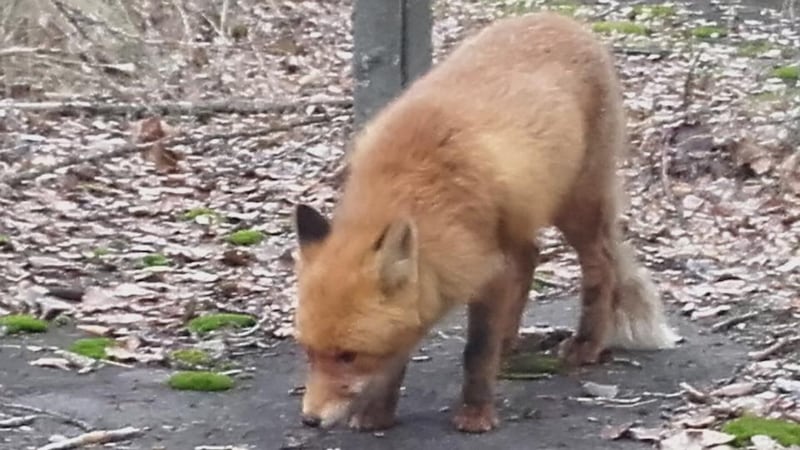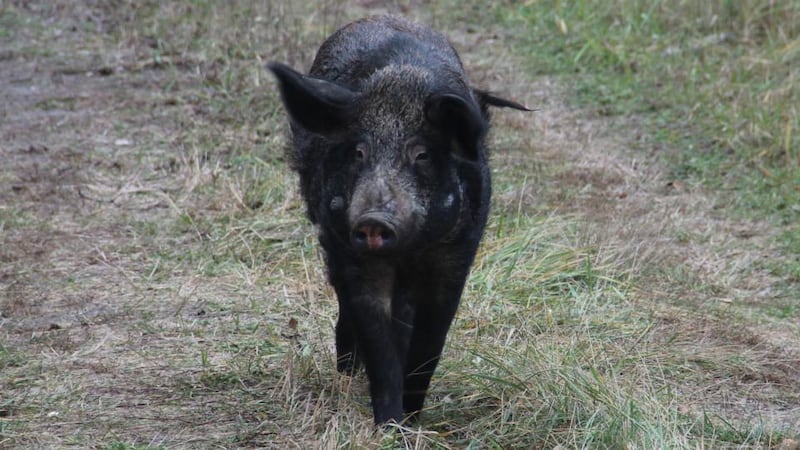In just a few hours a red fox, wild boar, flocks of sparrows, ravens and jays, as well as a grebe diving for fish, are all to be seen in one of the most infamous abandoned wastelands ever created. This is Chernobyl, just 3km from the site of the world's worst nuclear disaster. The natural world, however, is flourishing here.
Chernobyl may be best known as a cautionary tale of man's potential to destroy life on the planet. The nuclear accident here in 1986 resulted in the evacuation of more than 200,000 people – 50,000 of whom were scientists and engineers living in the purpose-built town of Pripyat.
The region remains cut off behind the 30km exclusion zone established shortly after the explosion that today is open only to those with prior clearance.


But the area has not quite become a wasteland. In the 31 years since the core meltdown at reactor number four, wildlife has taken back streets and forests, classrooms and Soviet-style town squares.
The first few months after the accident were damaging for animals. Mammals and birds were stillborn or died shortly after birth, suffering from physical defects caused by radiation poisoning; one local guide says none survived beyond seven months.
Unique opportunity
In the years since, however, wildlife has not only survived, but thrived, leading to a unique opportunity for Ukrainian and international researchers to study a one-of-a-kind ecosystem. Recent years have seen some attempt to track and monitor large animals to find out what effect living in an area that experienced 20 times the radioactive fallout of the Hiroshima bomb has had on them.
For Maryna Shkvyria of the National Academy of Science's Schmalhausen Institute of Zoology, the profusion of wildlife is down to one telling factor: the absence of humans and human activities. "For me, Chernobyl is a wonderful result for wildlife," she says from her apartment in Kiev's eastern suburbs. "It's in a unique trans-border region; some people have the idea that it's a catastrophic area but for me it's just a forest massif with European fauna."
Today, there are more black storks in the exclusion zone than ever recorded before, for the simple reason that there are no humans to disturb their nesting habits. Wolf packs, wild Przewalski’s horses, elk, lynx – even bison – have all reclaimed the abandoned spaces in and around the blighted zone, making Chernobyl a melting pot and a unique experimentation zone from where to study how massive amounts of radiation affect large and small animals, and their environments.
Ms Shkvyria’s 14 years of researching wolves in the exclusion zone have led her to some surprising conclusions. Today, there are between 40 and 60 wolves in the zone, a number that, based on hunting statistics since the 1960s, has remained stable since the 1986 disaster.
"I found that the Chernobyl zone is very typical of other areas in Ukraine; the wolf density numbers are normal. The wolves themselves are normal – there is a normal proportion of wild prey and a normal size home range," she says. "Wolves are quite flexible ecologically, so the disaster didn't affect them terribly." As a result, it has been difficult to assess the long-term genetic effects on wolves, she says, because generations of individual species must first be observed.
Small animals
For small animals that spend their entire lives in a particular part of the zone, the consequences of radiation poisoning should be easier to determine. Yet for 17 years until 2011, scientists studied the genetic makeup of more than 50 generations of mice and voles, and found in monitoring those in even the most seriously affected areas that they were “unable to document negative biological effects”.
Previous research published in 1992 by the journal Science of the Total Environment found: "After 2-2.5 years, marked differences between populations in the contaminated and control areas were no longer found."
According to Yegor Yakovlev, a researcher at the National Academy of Sciences, studying parasites may provide important insights into the effects of the 1986 disaster, as they serve as good indicators of radioactive contamination. “We have already collected a lot of information from parasites in wolves and other large creatures, but now we need to focus on medium-sized animals,” he says, “foxes [for example] – because they’re more representative and live in smaller areas than wolves.”
Despite the natural world's drive to assert itself over Chernobyl, human-based threats linger. The first year of Ukraine's ongoing conflict between Kiev and pro-Russian militias, 2014, was troublesome for the researchers because a growing suspicion – justified or otherwise – that separatists or others may have attempted to target the nuclear reactor, and that has led to heightened security around the exclusion zone.
Although the Belarus section of the exclusion zone has been declared a radioecological reserve that thus allows for the explicit protection of wildlife, scientists say no similar law exists for the Ukrainian sector, where hunting has become rife.
The wildest areas are in the western and northern parts of the zone but with an area the size of Luxemburg to run wild in, wolves are still being hunted from helicopters, and other animals such as deer and fish are said to be quarried by some of the more than 3,000 workers on site.
The official opening of parts of the zone to tourism in 2011 may have been the first step in a more permanent return of humans to Chernobyl; about 10,000 people visit the exclusion zone every year. For the birds, animals and flora – and scientists who study them here – that may mean the beginning of Chernobyl’s next disaster may be just around the corner.



















